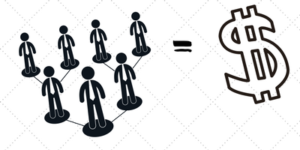Do you remember the last time you saw a hashtag? Chances are it was in the last hour but at least sometime today, and it may not have even been on a social network. Hashtags are everywhere these days, from your favorite TV show to highway billboards. As such, they can and should be a part of your social media strategy. The key is using them effectively.
A history of hashtags
Place the # symbol before a keyword or phrase and it becomes a clickable hashtag and a way to group like content on social media. With millions of social media updates posted each day, hashtags provide a way for us to find relevant information, as well as follow and contribute to conversations online.
Hashtags have been around for quite some time and are here to stay. Believe it or not, hashtags were used as early as the late ’80s/early ’90s on Internet Relay Chat. They really gained in popularity when used on Twitter about 10 years ago.
Today hashtags are mainstream on Facebook, Instagram, Pinterest and pretty much every online channel. They are also routinely used on TV shows, news outlets, billboards and other avenues to get and keep the conversation going online.
Why your business should use hashtags
You might use hashtags in your personal life — whether it’s to keep up with NFL trade rumors, join a political conversation or maybe just make a joke — but are you using them for your business? If not, you should be. Hashtags help grow your audience, promote your latest marketing campaign, prove you’re a thought leader and showcase your completed projects.
With so much content online, it’s key to be able to group and search for like content. If you aren’t using hashtags, chances are your online content isn’t being shown to the amount of people it could be. Additionally, if someone is searching for a certain hashtag, then you know that they are clearly interested in the information you are writing about. It’s a win-win.
Hashtags are already being used in our industry at conferences and tradeshows (#ConcreteDecorShow), to research industry trends (#GreenBuilding) and even just for inspiration (#DesignIdeas). You can use hashtags already out there and in use (search hashtags.org) or you can make up your own.
Top hashtag best practices
We’ve all seen people either misuse hashtags (meaning isn’t what they intended), use too many hashtags or use meaningless hashtags. Don’t fall into that trap. Here are our top tips for using hashtags on social media:
- The shorter the hashtag the better. #thishashtagissuperlongandhardtoread
- Use capitalization when including multiple words in the hashtag. #ConstructionJobs
- Limit hashtags to one to four per post (this applies to all social networks with the exception of Instagram). #10IsTooMany
- Research your hashtag before you post it. Do a quick search on Twitter or hashtags.org to ensure it has the meaning you think it does.
- Avoid overly broad hashtags. They won’t add anything to your post and will take up character limits. #BeSpecific
- Use the official hashtag. Most tradeshows, conferences and chats have an official hashtag. Make sure you use it.
- Monitor your hashtag. You will likely find new conversations to participate in, questions to answer and people to follow.
A word of caution about that last tip: In rare cases, hashtags can be hijacked and take on a negative meaning, so you want to ensure you are protecting your brand and not continuing to use a negative hashtag. An example of hashtag hijacking would be when McDonald’s started the #McDstories hashtag for people to share positive stories about the restaurant, but instead people started using it to share their McDonald’s horror stories.
Keep in mind that not every post should have a hashtag. If it seems forced, meaningless or too broad, then leave the # sign alone. Maybe you don’t have anything to say about #NationalCupcakeDay and that’s OK.
Also remember that hashtags’ effectiveness doesn’t end after the post. Continue to monitor hashtags. It is great way to participate in industry conversations and stay up-to-date with the trends that matter most to your business and its customers.


















